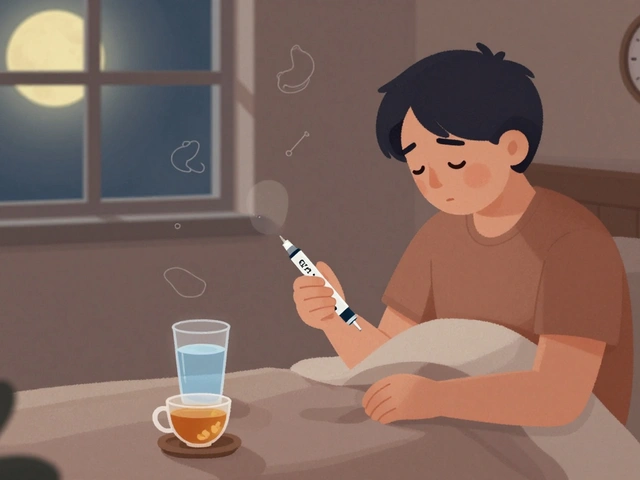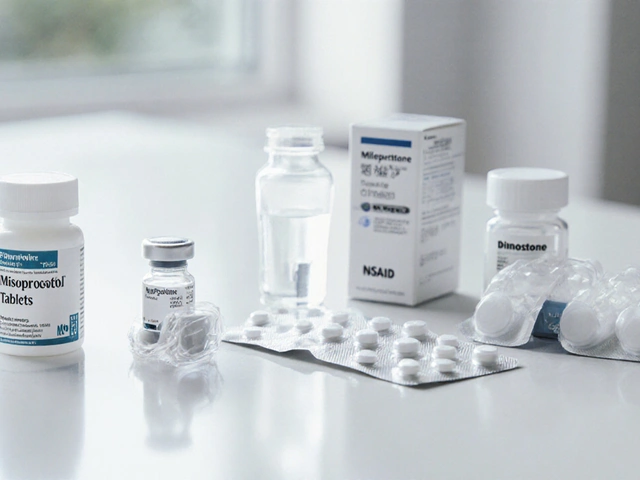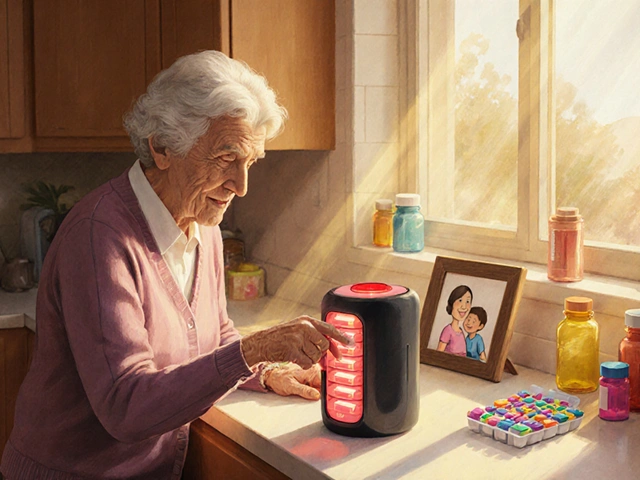Butylscopolamine (Buscopan): a clear, practical guide
You’ve probably seen Buscopan or hyoscine butylbromide on a label and wondered what it actually does. Simply put, butylscopolamine is an antispasmodic — it relaxes smooth muscle in the gut and urinary tract, so people use it for cramps, colic, and spasm-related pain. It’s designed to work locally and usually doesn’t cause the drowsy, brain-related side effects that some older anticholinergics do.
What it treats and how it works
Doctors and pharmacists commonly recommend butylscopolamine for sudden, crampy abdominal pain (irritable bowel spasm), menstrual cramping for some patients, biliary or urinary colic, and as a short-term aid during certain tests or procedures. The drug blocks acetylcholine receptors on smooth muscle, which reduces the involuntary contractions that cause sharp, cramping pain.
It comes in oral tablets, injectable forms, and sometimes suppositories. Tablets are handy for everyday cramps; injections are used in hospitals when faster action is needed. Because butylscopolamine has poor penetration into the brain, it tends to give fewer central side effects such as confusion or severe sedation compared with scopolamine hydrobromide.
How to use it safely
Follow the label or your prescriber’s instructions. Typical adult tablet doses are often 10–20 mg taken a few times a day depending on the product — check the package. Injectable doses are usually given in a clinical setting. Don’t exceed the recommended dose and don’t combine it with other strong anticholinergics unless your doctor says it’s OK.
Watch for common side effects: dry mouth, blurred vision, constipation, and a faster heartbeat. Most are mild and go away when the drug stops. If you have trouble urinating, severe constipation, a very fast heart rate, or an allergic reaction (rash, swelling, breathing trouble), stop the drug and get urgent care.
A few clear warnings: avoid butylscopolamine if you have untreated narrow-angle glaucoma, severe ulcerative colitis or a known severe blockage in your gut or bladder. People with myasthenia gravis, significant prostate enlargement, or certain heart rhythm problems should check with their doctor first. Pregnant or breastfeeding? Talk to your healthcare provider — some clinicians avoid it unless necessary.
Interactions are usually additive with other anticholinergic drugs: some antihistamines, tricyclic antidepressants, and certain motion-sickness medicines. If you take multiple medicines that cause dry mouth, constipation, or blurred vision, mention it to your pharmacist so they can check for problems.
Final tip: if cramps are new, severe, come with fever, blood in stool or urine, or weight loss, don’t treat with antispasmodics alone — see a doctor to rule out a more serious problem. For recurring cramps or long-term use, ask for a care plan that looks beyond quick symptom relief.
15
Tips for managing side effects while taking butylscopolamine
Taking butylscopolamine can sometimes lead to side effects, but I've found a few helpful tips to manage them. First, it's important to stay hydrated and maintain a balanced diet to help our body cope with the medication better. Second, talking to our doctor about adjusting the dosage can help minimize side effects while still providing relief. Third, taking the medication with food can help reduce stomach discomfort. Lastly, getting enough rest and practicing relaxation techniques, like deep breathing or meditation, can help alleviate any anxiety or stress triggered by side effects.
Latest Posts
Popular Posts
-
 Pharmacist Recommendations: When to Suggest Authorized Generics
Pharmacist Recommendations: When to Suggest Authorized Generics
-
 GLP-1 Side Effects: How to Manage Nausea, Dosing, and Realistic Expectations
GLP-1 Side Effects: How to Manage Nausea, Dosing, and Realistic Expectations
-
 Small Intestinal Bacterial Overgrowth: Breath Tests and Treatment Explained
Small Intestinal Bacterial Overgrowth: Breath Tests and Treatment Explained
-
 Acromegaly: Understanding Excess Growth Hormone and Effective Treatment Options
Acromegaly: Understanding Excess Growth Hormone and Effective Treatment Options
-
 Over-the-Counter Medication Safety: Hidden Ingredients and Interactions You Can't Afford to Ignore
Over-the-Counter Medication Safety: Hidden Ingredients and Interactions You Can't Afford to Ignore



